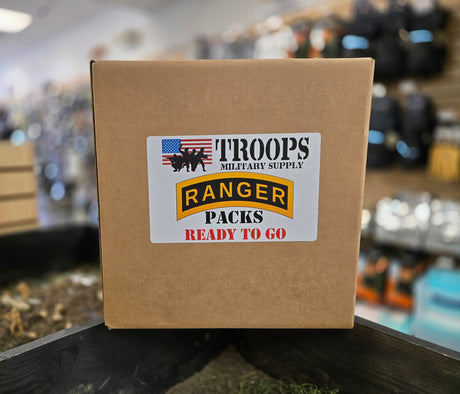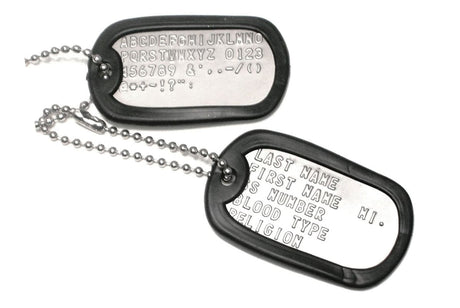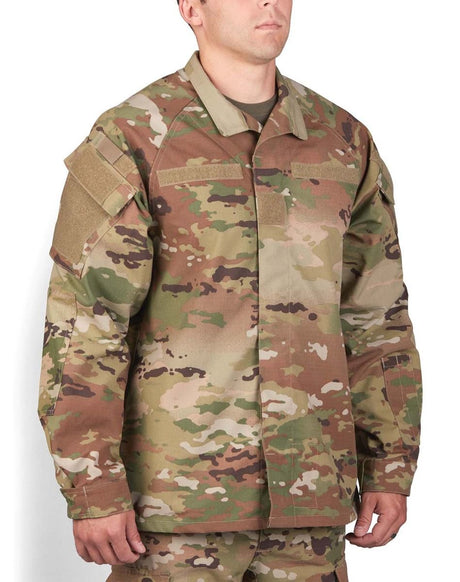The Infantry Basic Officer Leadership Course (IBOLC) traces its history to the School of Musketry, formed on 1 April 1907 at the Presidio of Monterey, California. This school was moved to Fort Sill, Oklahoma in 1915, where it was re‐designated the Infantry School of Arms. On 18 September 1918, the War Department issued orders moving the Infantry School of Arms to an obscure post named Camp Benning and the school’s first class of newly commissioned officers arrived on 2 December 1918 to “master those weapons which a soldier himself carries on foot.”
The Infantry School of Arms recognized the need for a unit of trained cadre and instructors to demonstrate the tactics and doctrine taught at the school. In 1919, the 29th Infantry Regiment was established to serve in this capacity for the next twenty‐four years.
War Department General Order 7 officially established the Infantry School at Camp Benning, Georgia on 30 January 1920 with the mission “to prepare selected officers to perform Infantry duties required in peace and war with emphasis on the art of command and leadership.” During that first year, 702 officers attended the course at Camp Benning, the largest body of student officers assembled in a time of peace for training in the art of war during America’s first 144 years. In 1940, the Infantry School became a separate part of the post and on 13 November 1941 the Student Training Units were reorganized into two student regiments and trained both officers and enlisted men.
By 1942, America had entered World War II and in May of that year, the Infantry School was expanded to three regiments under a Student Brigade. At the war’s end in 1945, the Brigade was deactivated, and the Infantry reverted to two training regiments. As the Korean War began in 1951, the Student Brigade headquarters was reactivated. Until 1953, however, there was no Basic Course for Infantry Officers. The Student Brigade ran the Infantry School’s Officer Candidate School, while officers from other commissioning sources were sent directly to their units.
In 1953, the Basic Infantry Officer Course was established and all newly commissioned Infantry officers, with the exception of OCS officers, attended this course supervised by cadre of the 1st and 2nd Student Regiments. This organization remained in effect until 1964, when the Infantry School was re‐designated the United States Army Infantry School and the School Brigade was formed with the 2nd Student Battalion to instruct Infantry Officers.
The Battalion was re‐designated in 1974 as the Basic Officer Training Battalion (BOTB), a provisional command subordinate to The School Brigade, with the mission of training infantry combat platoon leaders. During this time the program underwent major revisions. MG Willard Latham, the Commandant of USAIS, directed the basic course be improved so that lieutenants would become experts in weapons, tactics, and maintenance. GEN William Deputy, the TRADOC Commander, directed the Infantry School to test an Infantry Officer Basic Course (IOBC) structured with trainer‐ cadre assigned to each platoon. This organization was to be based on the Israeli Officer Basic Training system. Through 1977 and 1978, a Provisional Battalion was formed with a permanent home in Building 74 as the 2nd Student Battalion of the School Brigade.
In June 1982, permanent order 106‐1 re‐designated the battalion as the 2nd Training Battalion (IOBC). In late 1982 a major revision to the course took place; adding two additional weeks to the course making it 16 weeks long. In 1987 the IOBC line companies where recognized as Alpha, Bravo, Charlie, Delta, and Echo companies. On August 14, 1987, in accordance with Permanent Order 94‐37, the 2nd Training Battalion was re‐designated as the 2nd Battalion, 11th Infantry. On 8 February 1991 the School Brigade was inactivated and was re‐ designated as the 11th Infantry Regiment. In 2010 the Infantry Officer Basic Course was redesignated the Infantry Basic Officer Leader Course (IBOLC).
Over the years, the program of instruction for IBOLC continued to change, making it a more physically and mentally demanding course. But since 1907 the IBOLC mission has remained essentially unchanged:
To prepare and train Infantry Lieutenants to lead platoons in combat.
The present 11th Infantry Regiment of the Regular Army can trace its entity back to a Presidential decree signed by President Lincoln at the beginning of the Civil War in 1861. However, as far back as 1798, again in 1812, and in 1847, certain regiments of the Army bore the designation of 11th Infantry. These organizations, however, were militia or temporary organizations.
Of its Civil War record it is known to have been first a part of the Army of Ohio and later a part of the Army of Cumberland, taking part in such battles as Shiloh, the Kentucky Campaign, Chickamauga, Murfreesboro, the March through Georgia, and the Battle of Atlanta.
Following the Civil War, the 11th became known as the Wandering 11th. Between 1898 and 1920, the first battalion made 29 changes of station, including seven years of foreign service. The third battalion changed station 55 times, spending six years on foreign soil. The regimental colors have been flung to the breezes under the sun of nine different nations – Cuba, Philippine Islands, Mexico, France, Belgium, Iceland, The British Isles, Germany, and Luxembourg.
Just after the Civil War, the regiment was occupied with Indian campaigns and with short interims of garrison life until the war with Spain 1898. The Puerto Rican campaign light, with only one major battle at Las Marias being necessary to reduce the Spanish Garrison.
From 1904 to 1913 the Regiment was stationed in the West. In 1906, it supported efforts following the Great San Francisco Earthquake. In 1911, the 11th was moved to Texas City, Texas, to be in the proximity of threatened border trouble the General Pancho Villa and his outlaw army. After two years the regiment was moved to Arizona and New Mexico and performed guard duty along the border.
The 11th’s joined the Allied Expeditionary Force of World War I on April 24, 1918, when the regiment sailed for France, and by May 1st had completed the long hike to Camp Pontanazon near Chaumont, France, where it joined the 5th Division.
The 11th then took part in the Vosges Mountains, St. Mihiel, and Meuse‐ Argonne offensives. In the second phase of the Meuse‐Argonne offensive, the regiment forced a brilliant crossing of the Meuse river near Dun, under intensive artillery and machine gun fire, gained a bridge –head across the river and started
the Germans on retreat. For this action, the 11th has chosen November 5 as Organization Day and adopted the stirring French “Sombre et Meuse” as its Regimental March. After the armistice, the 11th was assigned to occupation duty in Germany and Luxembourg, returning to the United States in 1919.
Three years later the 11th moved to Ft. Benjamin Harrison, Indiana, for permanent station. There followed 17 years of garrison life.
In 1939, the 11th joined the 5th Division at Ft. McClellan, Alabama, and by 1942 the Wandering 11th was on its way to Iceland.
Out posting and defense of the Keflavik area in Iceland kept the troops busy for 15 months until the regiment moved to England in August 1942. Late in October the 11th moved into the bleak wet hills of Northern Ireland, where for eight months they trained for combat.
On the eve of the departure for the Normandy Beach head, the regiment was inspected by Generals Eisenhower and Patton. General Patton remarked “This is the fittest, roughest, readiest outfit that I’ve ever inspected.” At midnight on July 4, 1944, the 11th boarded the Transport Excelsion for the voyage to France, and on the afternoon of July 9 dropped anchor off the Coast of Normandy.
From Normandy, the 11th swept through Northern France, The Ardennes‐Alsace, Central Europe and the Rhineland to aid in the defeat of the Axis Powers. For their action, all companies of the 2d Battalion were entitled to a streamer in the colors of the French Croixe de Guerre with palm embroidered “Fountainebleau.” By the latter part of July 1946, the 11th had returned to the United States after four continuous years of war and occupation.
The regiment operated in Cam Lo, Dong Ha, Quang Tri, and Khe Sanh during the Vietnam War. The 11th Infantry took part in defeating the North Vietnamese Army’s Tet 1969 offensive and was involved in numerous counterattacks during the same year. During the Sanctuary Counteroffensive in Cambodia the 11th Infantry disrupted North Vietnamese operations in the country. The regiment was inactivated in 1972 at Fort Carson, Colorado.
The 11th Infantry was reactivated and transferred in 1987 to the Infantry School at Fort Benning, Georgia. 2nd Battalion currently serves as the Infantry Basic Officer Leader Course which trains and develops every Infantry Lieutenant for the U.S. Army.




